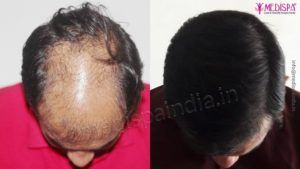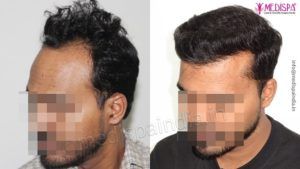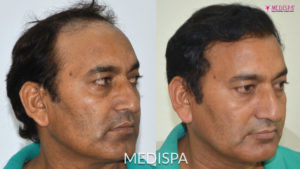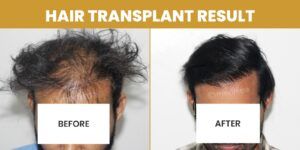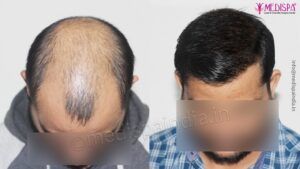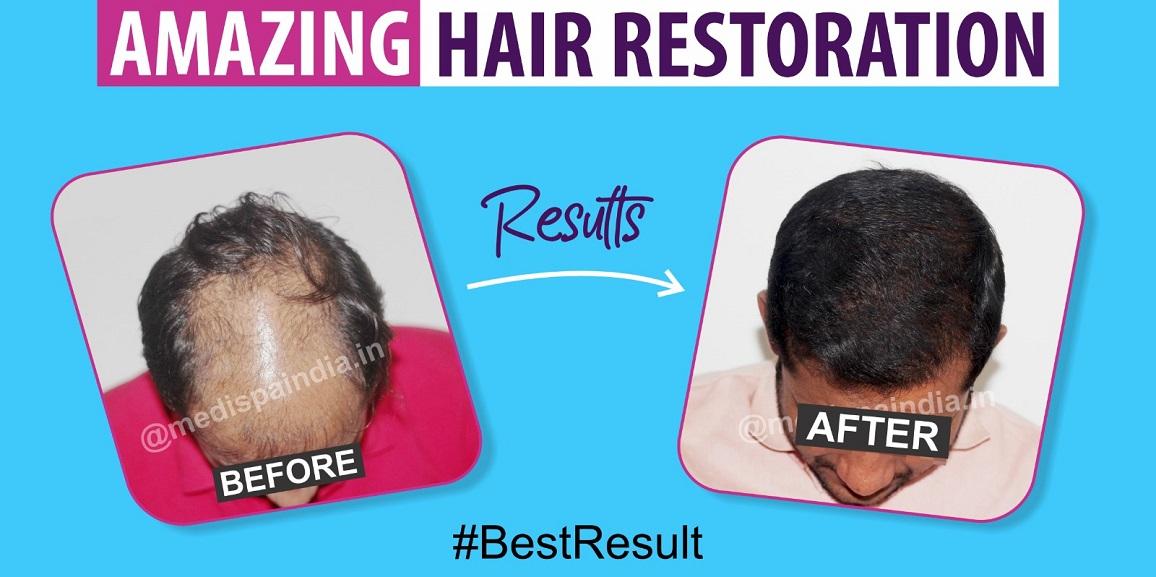
It is the desire of every individual to achieve optimal outcomes from cosmetic treatments without breaking the bank. The expertise and proficiency of the surgeon play a crucial role in ensuring successful results. Therefore, it is imperative to find top-notch surgeons who offer quality treatment at an affordable price. With the increasing awareness and growing interest in aesthetics, hair transplant in India has gained significant popularity.
Hair transplantation is gaining popularity in India due to the increasing awareness and societal and professional pressures for a pleasing appearance. The rising demand is also attributed to the relatively affordable hair transplant cost in India compared to global standards, as stated by a few clinics. It is essential to assess if hair transplantation is the right choice for you, despite the desire for a long-term solution to hair loss. Scheduling an initial consultation is necessary to address any concerns, evaluate your individual situation, and determine the feasibility of the treatment. Dr. Suneet Soni, one of the top hair transplant surgeons, is available at Medispa hair transplant centers in Delhi and Jaipur to provide honest answers to all your queries regarding hair transplantation.
DIFFERENT TECHNIQUES OF HAIR TRANSPLANT
Currently, a major issue surrounding hair transplants is the worry about achieving natural-looking results, particularly due to the unsatisfactory outcomes associated with older methods such as hair plugs. Fortunately, advancements in hair restoration technology have alleviated these concerns. State-of-the-art techniques are now used to guarantee a seamless integration of newly transplanted hair with your existing hairline and facial characteristics. The latest hair transplant methods involve two primary approaches for extracting hair follicles during the procedure.
- Follicular unit hair transplantation (FUHT)
- Follicular unit excision (FUE)
The primary distinction between FUE and FUT lies in the technique utilized for harvesting hair follicles from the donor region, which may include the back and sides of the head or other body parts. FUT entails the removal of a narrow strip of the scalp, dissection of follicular grafts under a microscope, and subsequent implantation in the recipient area. Conversely, FUE, or follicular unit extraction, involves the use of a motorized surgical device to individually extract “follicular units” before implanting them in the recipient site. The selection of method is contingent on factors such as the pattern of hair loss, the patient’s age, the quantity and quality of available donor hair, and the degree of baldness.
How many grafts is needed?
The answer to this inquiry can solely be verified by your hair transplant specialist, as it differs among individuals and relies on a multitude of variables.
- The level of hair loss: The specific region affected by hair loss, as classified by Norwood’s scale, determines the amount of follicular grafts needed to treat the condition. Individuals falling under Norwood VI and VII categories, experiencing severe hair loss, usually require a larger number of transplants. Moreover, the availability of hair follicles in the donor area is a key factor in deciding the quantity of grafts that can be safely harvested without causing damage or reducing the density of the donor region. The density of the donor area also determines whether hair follicles can be extracted from the DHT-resistant scalp or if they must be sourced from other body parts.
- Hair thickness: One high-quality follicular graft has the ability to effectively cover a larger bald area in comparison to several thin grafts. Additionally, curly or wavy hair typically results in a more extensive coverage and fuller look following a hair transplant surgery.
- Genetic predisposition:It is essential to handle the extraction of grafts with care for individuals with a genetic predisposition to severe hair loss. The primary goal in these instances should be to conserve as many hair follicles as feasible for upcoming procedures, with the aim of minimizing future hair loss.
- Age of the patient: When evaluating younger patients experiencing hair loss, it is crucial to thoroughly evaluate their condition before deciding on a hair transplant. This is due to the fact that their hair loss is often unpredictable and can progress rapidly. If a hair transplant is deemed suitable, it is recommended to extract a moderate number of grafts during the procedure to safeguard the hair follicles for potential future treatments in the event of additional balding.
- The expertise of the surgeon: It is crucial in enhancing the survival rate of grafts, particularly in challenging cases. Preserving grafts is essential in cases of hair loss, as the supply of healthy hair follicles is limited. Conversely, inexperienced surgeons may extract more grafts initially to make up for any potential loss due to their lack of skill. Hence, it is important to select a proficient surgeon who recognizes the importance of each follicular graft, both in the present and for future hair loss issues.
- Expectations of patient: It is crucial to manage patient expectations by informing them that achieving a youthful appearance like a teenager may not be realistic. However, it is important to strive to meet their expectations within safe and reasonable limits. To ensure patient satisfaction post-procedure, it is recommended to clearly communicate the achievable minimal expectations.
How to decide the hair transplant technique in high grade baldness?
The treatment of severe baldness was once a mere aspiration in the past, but has now transformed into a tangible reality. Several cutting-edge techniques have been devised to effectively address extensive baldness, provided that the individual’s condition permits. These techniques commonly employed in the treatment of severe baldness encompass:
- FUT hair transplantation is recommended for severe cases of baldness requiring up to 3500 hair grafts. A narrow strip of scalp is removed and carefully dissected under magnification to obtain individual hair grafts. This method is beneficial when there is a limited supply of donor hair follicles, as it allows for a larger number of grafts to be harvested from a smaller area.
- The combination of FUT and FUE techniques is recommended for advanced baldness cases requiring over 4000 hair grafts. This approach involves initially utilizing the FUT technique to harvest the maximum number of hair follicles, followed by extracting the remaining grafts using the FUE technique.
- The combination of FUT, FUE, and BHT techniques is employed in cases requiring a larger number of hair grafts, such as in high-density hair transplants or advanced stages of baldness. In addition to FUT and FUE, this technique utilizes other donor sites on the body, particularly the area under the chin, for harvesting hair grafts.

